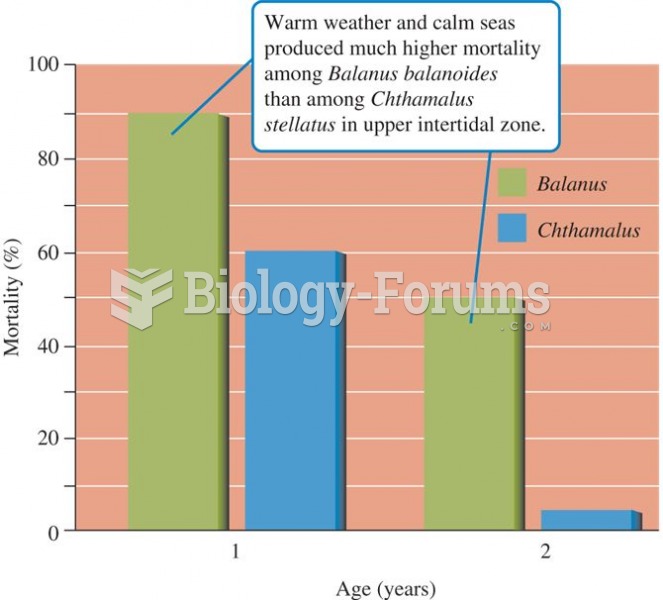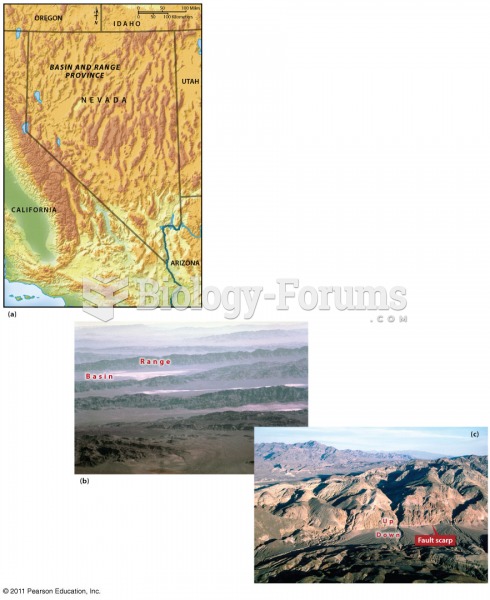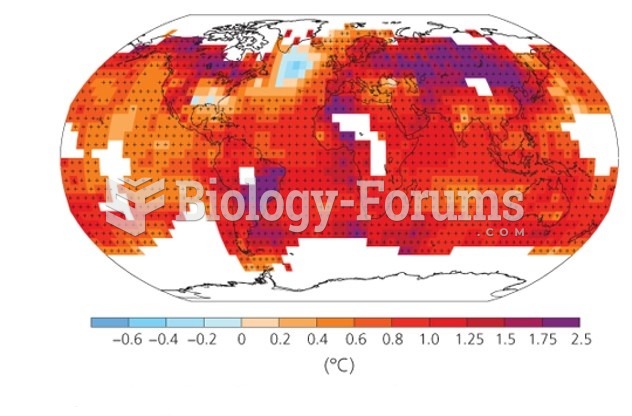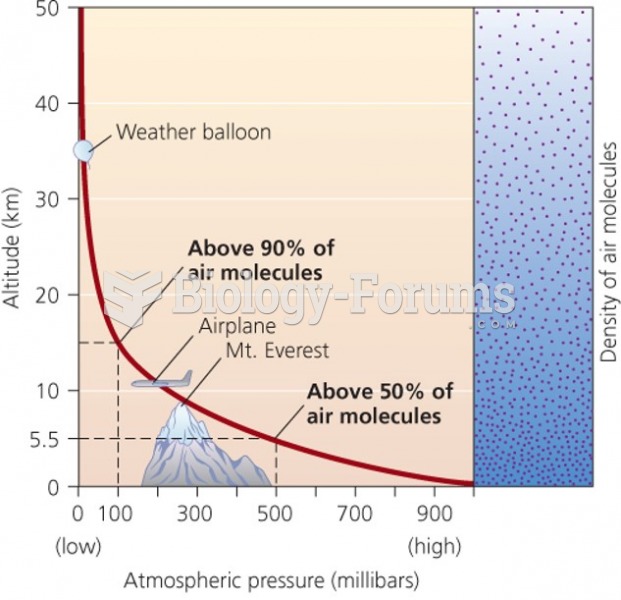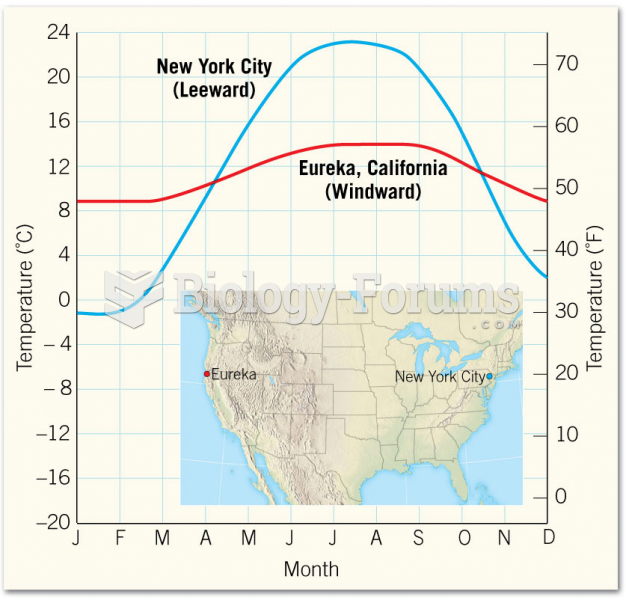|
|
|
There are major differences in the metabolism of morphine and the illegal drug heroin. Morphine mostly produces its CNS effects through m-receptors, and at k- and d-receptors. Heroin has a slight affinity for opiate receptors. Most of its actions are due to metabolism to active metabolites (6-acetylmorphine, morphine, and morphine-6-glucuronide).
It is believed that humans initially contracted crabs from gorillas about 3 million years ago from either sleeping in gorilla nests or eating the apes.
In the United States, an estimated 50 million unnecessary antibiotics are prescribed for viral respiratory infections.
The human body produces and destroys 15 million blood cells every second.
There are over 65,000 known species of protozoa. About 10,000 species are parasitic.


